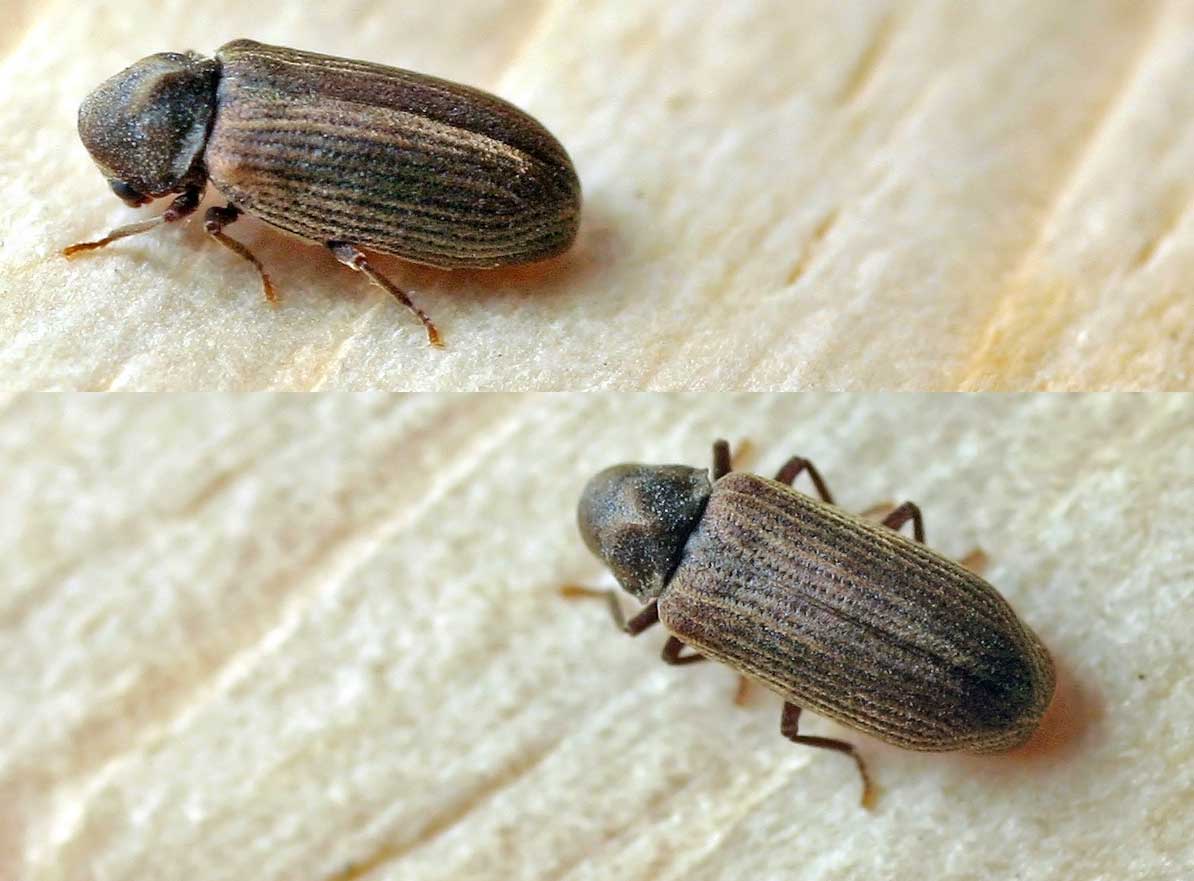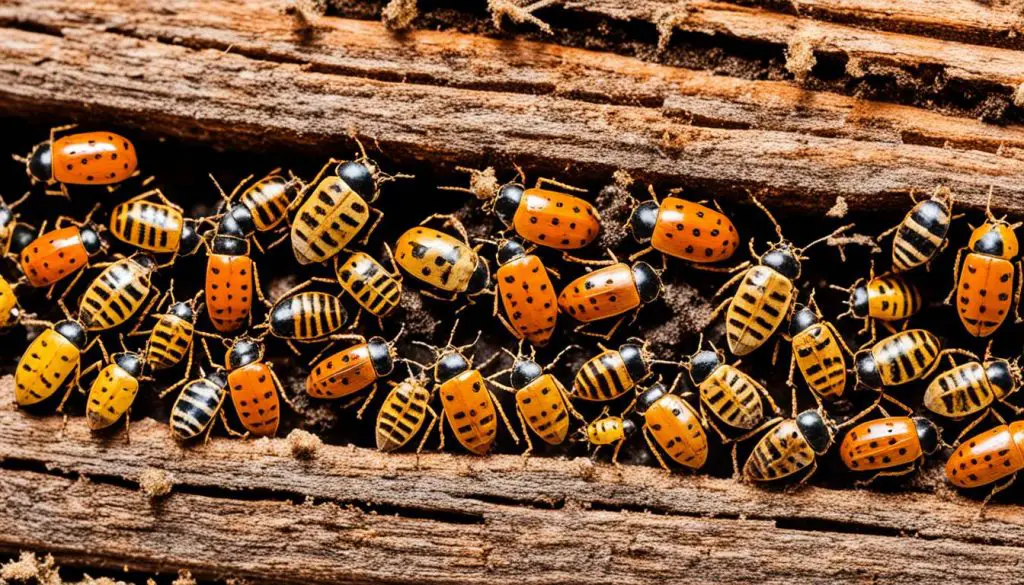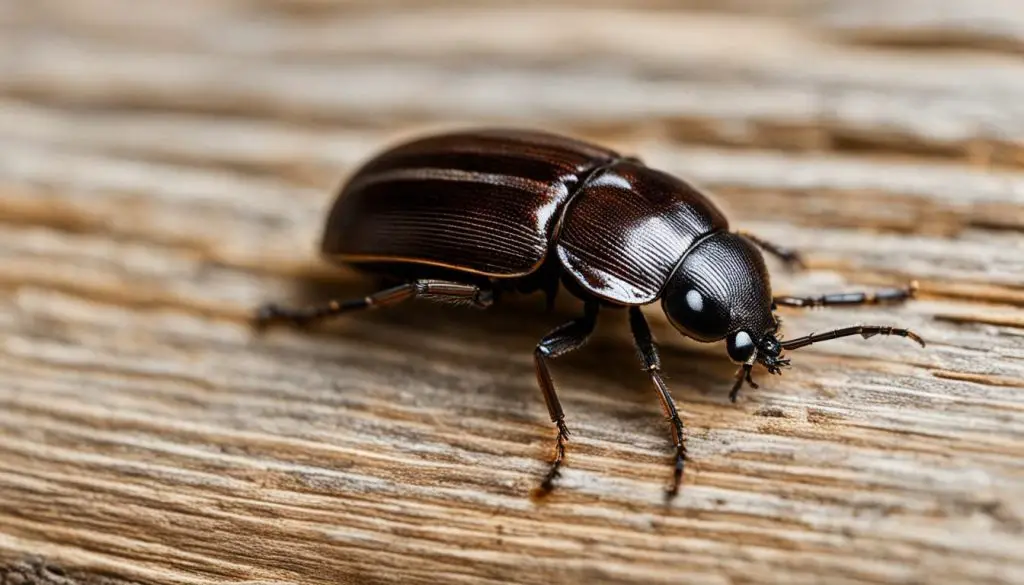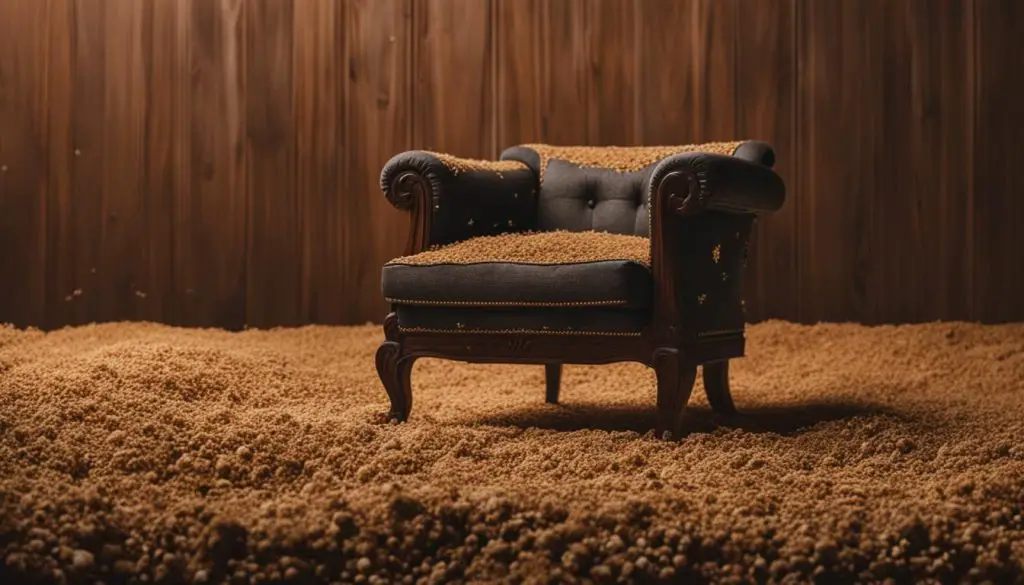Furniture beetles can wreak havoc on your home furniture, causing damage and compromising its integrity. Whether you have modern, affordable, high-quality, stylish, or contemporary home furniture, it is essential to protect it from these notorious pests. In this article, we will explore what furniture beetles are, how to identify an infestation, and most importantly, effective strategies to eliminate them.
Key Takeaways:
- Furniture beetles can cause significant damage to your home furniture.
- It is important to know the signs of a beetle infestation to take prompt action.
- Different species of beetles may require different treatment methods.
- Prevention is key in avoiding furniture beetle infestations.
- Seeking professional help can ensure effective and complete eradication of the infestation.
What are Furniture Beetles?

Furniture beetles are a group of insects that can cause extensive damage to your home furniture. Commonly known as woodworms, these beetles bore into wood and lay their eggs in the cracks. As the eggs hatch, the larvae feed on the wood, consuming it until they mature into fully-grown beetles.
There are several types of furniture beetles, each with its characteristics and behavior. Some of the common species include:
- Deathwatch beetles
- Powder post beetles
- Woodboring weevils
- Common furniture beetles
- House longhorn beetles
It’s important to identify the specific type of beetle infesting your furniture to determine the most effective treatment method. Different species may require different approaches for eradication.
Related: How to Get Rid of Bed Bugs in a Couch: 3 DIY Methods
Understanding the characteristics and habits of furniture beetles is crucial in protecting your home furniture from their destructive impact. In the next section, we will explore how to spot the signs of a wood beetle infestation and take necessary actions to mitigate the damage.
How to Spot a Wood Beetle Infestation
When it comes to protecting your valuable home furniture, staying alert for signs of a wood beetle infestation is essential. These tiny pests can cause significant damage if left unchecked. By familiarizing yourself with the indicators of an infestation, you can take prompt action to address the issue and protect your furniture.
Signs of a Wood Beetle Infestation
- Exit Holes: One of the most evident signs of a wood beetle infestation is the presence of small exit holes in the wood surfaces of your furniture. These holes are created when the adult beetles emerge from the wood after completing their life cycle.
- Frass: Frass refers to the fine wood shavings or dust that accumulates near the exit holes. It is the excrement of the wood-boring larvae and can indicate an active infestation.
- Weak or Crumbling Wood: Wood that is infested with beetles may become weakened, brittle, or crumble easily. If you notice your furniture has developed structural issues or has become unsteady, it could be a sign of a significant infestation.
To ensure early detection and minimize the potential damage caused by wood beetle infestations, it is crucial to regularly inspect your home furniture for these signs. Promptly addressing any indication of an infestation will help protect the quality and longevity of your furniture.

Where Do Furniture Beetles Come From?
Furniture beetles can find their way into your home through various channels. Understanding their sources can help you prevent infestations and effectively control them. Let’s explore the common paths through which these pests enter your home:
- Infested Wood: One of the primary ways furniture beetles infiltrate your living space is through infested wood. These pests lay their eggs in cracks and crevices of wooden furniture and structures. When the eggs hatch, the larvae feed on the wood, causing damage and eventually emerging as adult beetles.
- Shelter Seekers: Furniture beetles can also enter your home while seeking shelter. They are attracted to warm and cozy environments, making your house an inviting place for them to settle and reproduce.
- Food Sources: Certain species of furniture beetles are attracted to food sources like garden plants, grains, and packaged food items. They might be present in the products you bring into your home, leading to an infestation.

Comparison of Furniture Beetle Entry Points
| Entry Points | Risk Level | Prevention Tips |
|---|---|---|
| Infested Wood | High Risk | Inspect wooden furniture before bringing it into your home. Consider treating it with protective coatings or exposing it to sunlight to eliminate potential larvae. |
| Shelter Seekers | Medium Risk | Seal cracks and gaps in your home’s exterior. Use window screens and door sweeps to prevent beetle entry. Ensure proper ventilation and minimize clutter where beetles can hide. |
| Food Sources | Low Risk | Inspect packaged food items for signs of infestation before bringing them home. Store grains, pet food, and other food sources in airtight containers to deter beetles. |
How to Get Rid of Furniture Beetles
If you have a furniture beetle infestation, it is crucial to take immediate action to eliminate these pests and protect your home furniture. Hiring a professional team that specializes in woodworm treatment is recommended to ensure effective eradication. Different species of beetles may require specific treatment methods to achieve the best results.
Common treatments for furniture beetles include:
- Chemical sprays: Professional pest control experts can apply targeted chemical sprays to the affected areas. These sprays are designed to kill the beetles and their larvae, preventing further damage to your furniture.
- Gel treatments: Gel treatments are applied directly to the infested wood, providing a long-lasting solution to eradicate the beetles. The gel penetrates deep into the wood, reaching hidden larvae and effectively eliminating them.

| Treatment Method | Advantages | Disadvantages |
|---|---|---|
| Chemical sprays | – Effective in killing beetles and larvae – Treats a large surface area at once – Suitable for severe infestations |
– Requires professional application – May involve the use of chemicals – Temporary displacement from treated areas |
| Gel treatments | – Targets hidden larvae – Provides long-lasting protection – Minimal disruption to furniture |
– Requires professional application – May take time to fully eradicate the infestation – May require multiple treatments |
Prevention of Furniture Beetle Infestation
To protect your home furniture from beetle infestation, it’s crucial to implement preventive measures.
- Remove dead wood: Deadwood serves as an attractive breeding ground for furniture beetles. Regularly inspect your property and remove any dead or decaying wood that may be present.
- Protect wood piles: If you have wood piles for your fireplace or outdoor projects, cover them with pest-proof covers to prevent furniture beetles from infesting the wood.
- Make structural repairs: Seal any cracks or gaps in your home’s structure to limit the entry points for beetles. Pay close attention to areas where wood and masonry meet, as these are common entry points.
- Inspect furniture: Before bringing new or used furniture into your home, thoroughly inspect it for any signs of infestation. Look for exit holes, frass, or weak and crumbling wood.
- Treat signs of infestation: If you notice any signs of a furniture beetle infestation, take immediate action. Treat the affected furniture with appropriate methods or consider professional help to prevent further spread.
Related: How to Keep Birds off Patio Furniture
When to Seek Professional Help
While there are some DIY treatments available for furniture beetle infestations, it is often best to seek professional help. Pest control companies have the knowledge and expertise to properly identify the species of beetle and provide effective treatment methods. Professional treatment can help ensure complete eradication of the infestation and prevent future reinfestations.
| Benefits of Professional Help: | DIY Treatments: |
|---|---|
|
|
Conclusion
Furniture beetles can pose a serious threat to your beloved home furniture. However, armed with the right knowledge and taking swift action, you can effectively eliminate these pests and safeguard your cherished pieces. Regular inspections, along with preventive measures and professional treatment, are paramount in dealing with furniture beetle infestations.
If you suspect a furniture beetle infestation, it’s vital to act promptly. While there are DIY treatments available, seeking professional help from pest control companies is often the most effective solution. They possess the expertise to identify the beetle species accurately and provide tailored treatment methods that ensure complete eradication.
Remember, protecting your home furniture from furniture beetles requires a proactive approach. Stay informed, act swiftly, and employ preventive measures to keep your furniture safe and free from these destructive pests.
FAQ
How can I get rid of furniture beetles?
It is recommended to hire a professional team that specializes in woodworm treatment for effective elimination. Different species of beetles may require different treatment methods, including chemical sprays and gel treatments.
What are furniture beetles?
Furniture beetles, also known as woodworms, are a group of insects that bore into wood. They lay their eggs in cracks of wood, and their larvae feed on the wood until they mature into fully grown beetles.
How can I spot a wood beetle infestation?
Signs of a wood beetle infestation include exit holes in the wood, frass (fine wood shavings) near the exit holes, and weak or crumbling wood. Regularly inspecting your furniture can help identify these signs.
Where do furniture beetles come from?
Furniture beetles can be introduced to your home through infested wood or attracted to your house while looking for shelter. Certain species may also be attracted to food sources like garden plants, grains, and packaged food.






